I’m always fascinated by people who are the first to do something. I take little interest in things like climbing Everest, other than reading the current news of how the mountain’s exploitation is causing the needless deaths of adventurous souls from around the globe, as I don’t see much point in so exactly treading in the footsteps of countless others. I guess the view is nice. I’ve seen the pictures.
But fencing firsts are a particular favorite of mine. By their very nature, they cannot be replicated. You can’t achieve a fencing championship in the same way as anyone previously. No one can make a reasonable argument against your victory because the results happened right on the strip where someone walked away the winner and another was defeated, one-on-one. It is, definitively, your accomplishment.
Ruth White in 1970 from Ebony Magazine.
Ruth White was The First in fencing history. And not in a single category of history but rather in an impressively long list of firsts. She was the first black athlete to win a US National Fencing title in any weapon. She was the first black athlete to win the US National Women’s Foil individual title. She was also the youngest fencer to win the US National Women’s Foil individual title up to that time, winning at 17 years of age. She also won the U-19 National foil title in the same year. That’s how 1969 shaped up for Ruth White. All of those successes led to her being named to the 1969 World Championship team. Again, youngest athlete ever selected for the US team. First black athlete selected for the US fencing team.
The 1969 World Championship team in Cuba in front of their hotel. Seventeen year old Ruth White is standing 4th from the left next to then-fifty-two year old teammate Maxine Mitchell. It’s an interesting contrast. Maxine was a grandmother and Ruth was still in high school.
Ruth was raised in Baltimore and started fencing at the YWCA when she was 13. She fairly quickly outpaced the teacher at the Y and moved to a Baltimore fencing club, taking lessons from Steve Bujnovszky, the first of three Hungarian coaches that guided her. The other two were Lajos Csiszar in Philadelphia and Bela de Csajaghy at NYU.
Ruth posing with coach Bela de Csajaghy. I’d have said “during a lesson from”, except he’s holding an epee.
I first became interested in pursuing a story about Ruth when I spotted her name on one of the plates attached to the carrying case made for the Helene Mayer Memorial trophy that is now in the Archive collection, thanks to Kathy Krusen at Halberstadt Fencers Club. I knew Ruth was an East Coast fencer but she made it out West for this event. Why or for how long I can’t guess. She took 2nd place to Harriet King at the 1971 Helene Mayer Memorial competition. If you were looking for the reason I’m writing about an East Coast fencer here on my West Coast site, there it is. And look! Photo documentation!
A blurry photo of the engraved plate from 1971 on the Helene Mayer Memorial trophy.
Ruth White, Harriet King and Tommy Angell in San Francisco’s Letterman Gymnasium, the sight of many years worth of tournaments. The trophy in Harriet’s arms is an absolute treasure. Made in France, it’s so heavy that it’s no picnic holding it up for very long. I can imagine taking first makes the burden a little lighter.
It wasn’t until I found an article published in the January 1970 edition of Ebony Magazine that I had the material to make this story fun to look at. Several great photos with a story spelling out where she’d come from and where she was headed circa 1970 makes for an interesting read. Especially because she clearly had her eye on her future goals at the age of 18. She had chosen NYU out of multiple scholarship offers due to the strength of that school’s pre-med program. And, yes, today it’s Doctor Ruth White and it seems she’s still practicing down in the Los Angeles area.
Ruth White with Ed Ballinger, who became the 3rd black athlete to win the US National Men’s foil title, behind Uriah Jones and Bert Freeman.
But oh, the backstory. There was a time, and not really all that long ago, when black fencers didn’t have access to fencing competitions.
I have a document in my Archive collection written by Olympic and fencing historian George Masin that details the events surrounding the integration of the AFLA. As with every sport that faced up to the issue of integration, there are both heroes and villains. The villains of fencing who steadfastly opposed breaking down the racial and color barriers so long in place, are unnamed in the article. But the heroes are called out. Take a bow, Columbia University. It seems that in January of 1949, a year and a half after Jackie Robinson first took the field for the Brooklyn Dodgers, Columbia was fielding a men’s team that included two black fencers, Justice Cherubin and Ted Reed. As they prepared for upcoming AFLA-sponsored events, Columbia was approached by AFLA reps who advised they avoid an “embarrassing situation” by removing the black members of their squad prior to entering AFLA tournaments. Well this set then-Columbia head coach Joseph Velarde right off. He immediately announced publicly that Columbia was withdrawing from participation in any AFLA events due to discrimination against his team members, and did this with the full support of the administration of the University. Remember, at this time in history membership of the AFLA was nothing like the size of the organization today. Columbia University put a lot of fencers on the strip at a lot of tournaments. Their stance on this issue was a big deal. The two largest facilities in New York City for competitions were the New York Athletic Club and the New York Fencers Club. Fencers Club had had a racial incident a year or two prior, when they denied entry to Violet Barker, who had won a one-year AFLA membership at a WPA-sponsored citywide tournament. Here are the details of the incident, as written by George Masin:
Some weeks later, she showed up at the New York Fencers Club for an AFLA sponsored tournament and was met at the door by the president of the Fencers Club. He asked her if he could help her and she said: “I am here for the tournament.” He replied: “Only League members can fence here.” “I am a member,” she responded and handed him her membership card. He ripped the card into small pieces and said: “Now you’re not.”
Her coach, Al Hern of the Harlem YMCA, pushed for filing a racial discrimination lawsuit but Violet declined to pursue one. Miguel de Capriles, then President of the AFLA and a supporter of integration, contacted the NYAC and was told that that venerable institution had previously admitted black athletes for competitions and would not deny entry to black fencers, either. That left only the NYFC in play and while there was pushback and ugly language, de Capriles won the argument, stating, “Gentlemen, it is time that we recognize that fencing has changed from the aristocratic sport that it was to the democratic sport that it is.” And by ‘aristocratic’, I’m pretty sure he meant ‘white’.
Classic 1970s font work from Ebony Magazine.
It took twenty years for that breaking down of the racial barrier to produce a black champion. Is it ironic that the name of that champion was Ruth White? Whether karma or coincidence, Ruth White served up a life’s worth of fencing victories during a very short athletic career. World Championship teams, Pan-American Individual Silver and Team Gold, two U-19 titles, two collegiate titles, two National Women’s Foil titles and a berth on the 1972 Olympic team. And second at the 1971 Helene Mayer, because West Coast. That’s a pretty dominant four years of fencing.
In the gym at NYU with Csajaghy.
After the 1972 Olympic Games Ruth White put down her foils and headed off to medical school, bringing to a close her meteoric rise to the top. Medical school proved to be yet another challenge that she faced down, becoming Dr. Ruth White, Champion Fencer and Doctor of Internal Medicine. She went from beginning fencer to National Champion in four years. I don’t know if that’s another of her Firsts, but it sure seems like it could be.


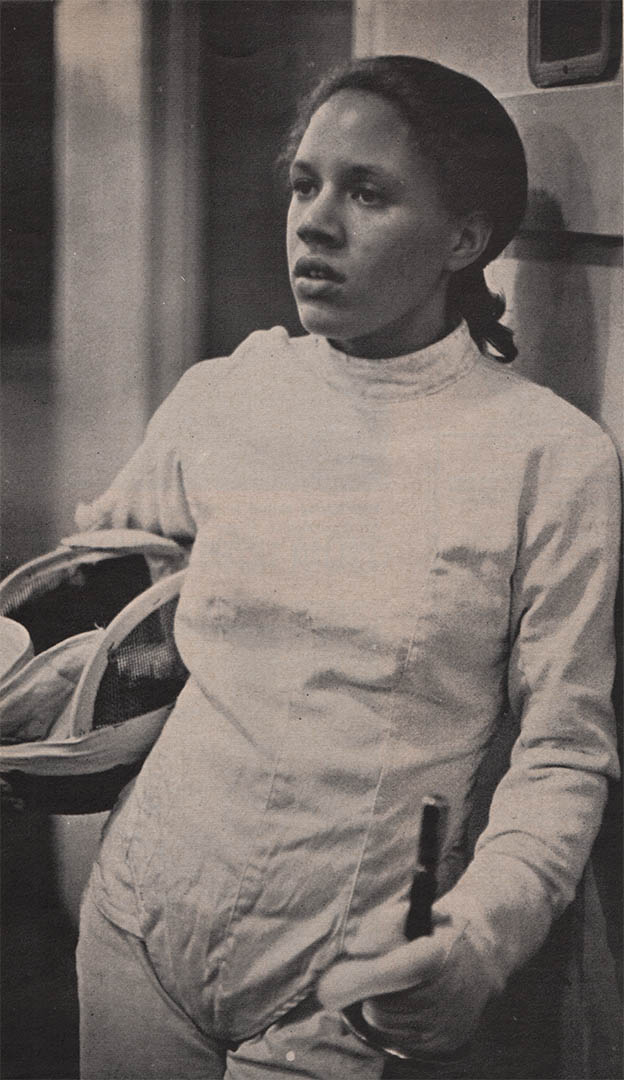
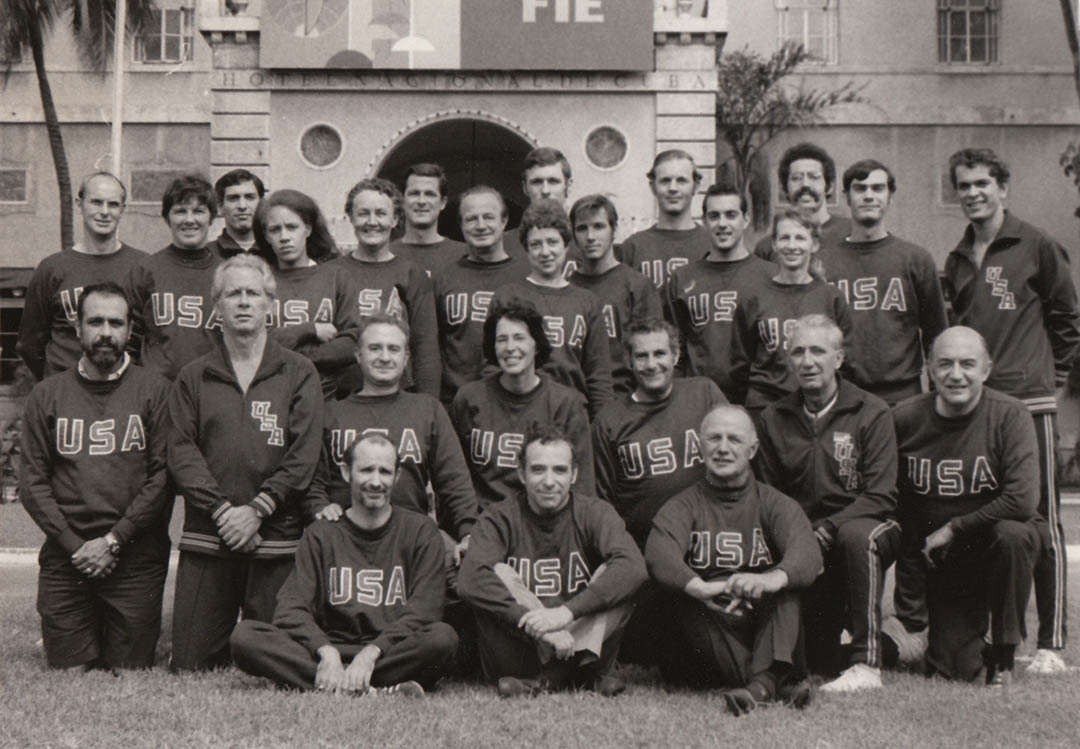
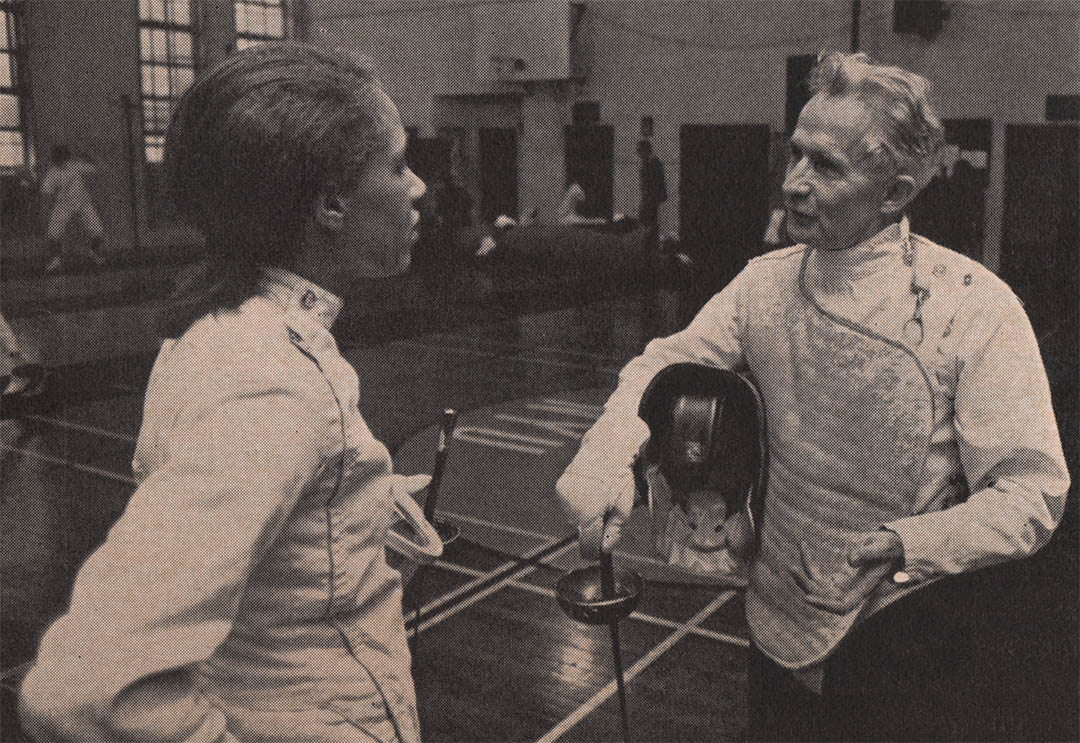

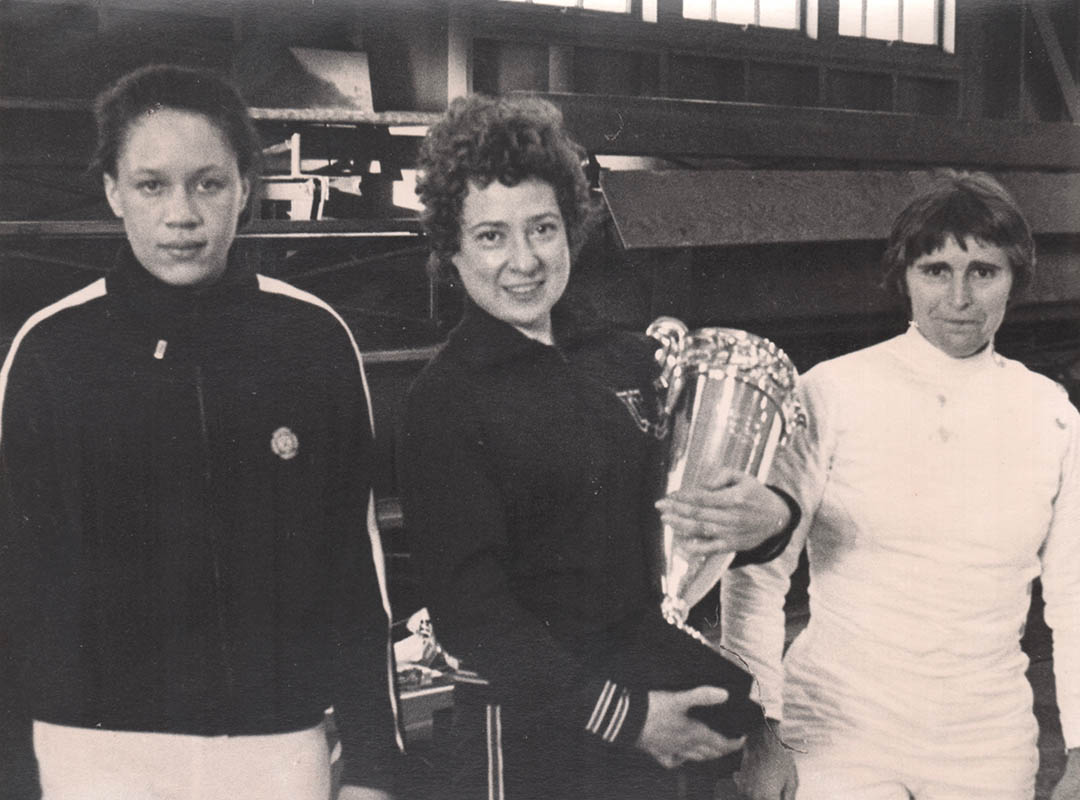
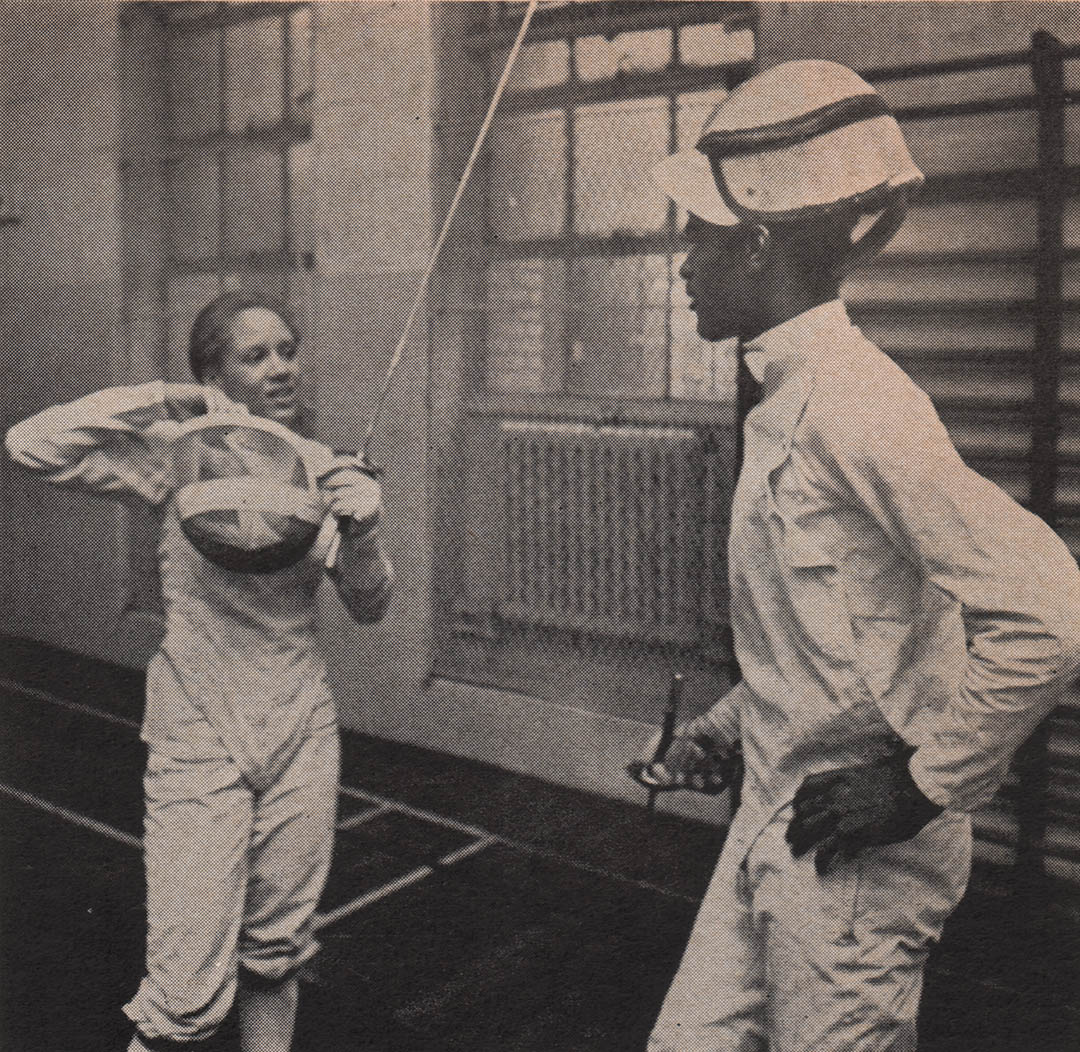

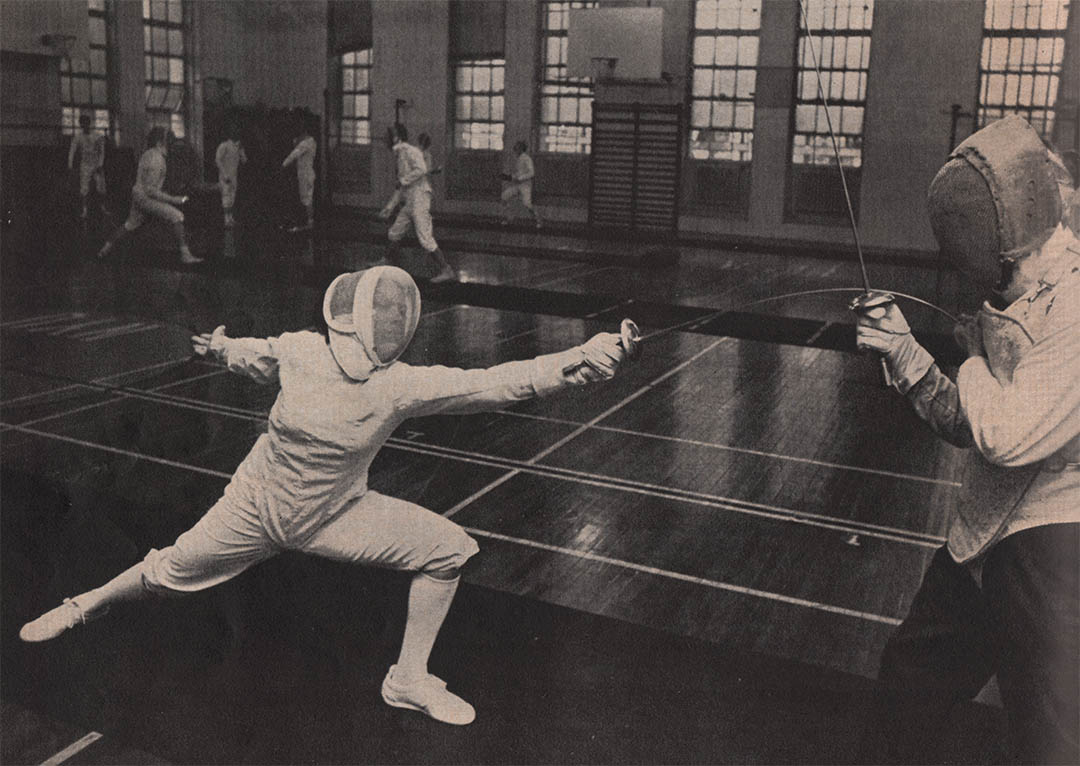
Great article on Ruth White, she was quite a phenom during my generation. I had the good fortune of being on a number of teams with her, she was a great teammate. We both shared the distinction of being the youngest members of the teams we made.
I was fortunate to meet Ruth at my first JR. World’s in 1971 where she won the Bronze Medal. I am quite sure that she was the first USA WF fencer to win a Medal at the Jr. Worlds. Even though I was only 14, I realized that Ruth was a special individual both in fencing and in life.
Great memories. Joseph Vince lived in my parent’s Stamford cottage. He and his wife showed me what a mariage was like. Joe trained me. After that the MIT fencing team became my spiritual home.
Hi’ It’s Ruth White. Wow. I really enjoyed reading that article. It brought back a flood of memories and made me really feel special. I was so lucky to find fencing. I lived in a world that was wired for discrimination. Not just from white people, black people too. White people called me the N word from the first day my parents marched me off to school to when I left the all white school in 4th grade and went to an all black school. In the black school they called me a mutt and many times a few girls would try to give me a beat down. IT turns out that I was a really good fighter so that didn’t go on for very long. But I carried an emotional burden, a scar, that shaped the way I saw the world and reacted to people. When I entered the fencing salon in Baltimore that was the first time in my life that race wasn’t an issue. How hard you tried was the issue. I began to thrive. I am forever grateful to all my fencing friends. They never made me feel I was anything other than welcome. This changed my life. It allowed me move forward, pushing the scars to the side and position my life for loving and caring for all people. At 68, I recently closed my Internal medicine practice and moved into UCLA where I am practicing part time. Along the way I had 3 wonderful children and many great adventures. I have been to the Amazon, Galapagos Islands, and I recently returned from East Africa, Tanzania and Zanzibar. I still work hard most days, but I am at peace and very happy, especially today after reading this article. The memories are still flooding in. Thanks, Ruth
Ruth, We fenced in college at the same time. I was at Jersey City State college and we were favored to win the NIWFA Championhips in 1970 and you and Sally came along and won the championships. It was an honor to fence with you.
Thank you, Dr. White for the update. Any time you would like to talk to us some more about your career and fencing, we’ll be happy to listen.
Doug, I have a small favor to ask of you. Could you please contact me via email
I’ll shock some people by commenting but it’s worth doing….being Ruth’s ex=husband and fellow fencer in her time I can attest to the discrimination she dealt with and she was putting things mildly when she says….it came from both blacks and whites…it is a way one had to deal with things and I’ve always felt it contributed to the “mental toughness” that one needs to become a quality fencer. It was good to find out that ur teammates you came to know whether black or white saw a fencer and not color….to know there were people like that was really needed!There were always two things I felt were true and strong,,,,she was a great fencer ….and a damn good Dr……oh yeah…and we have 3 great kids…..she deserves all the accolades…..she’s earned them!!! CONGRATS….
Thank you, Mr. Hooker for your comments!